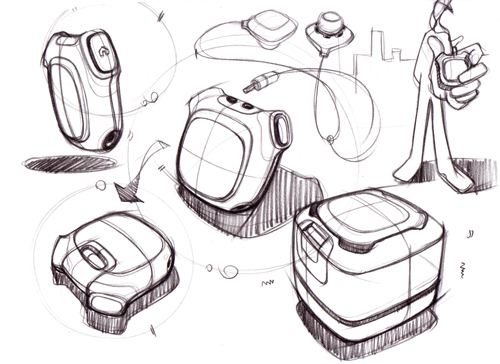 Ever since Microsoft announced their revolutionary Kinect system a few months back, every geek and hacker has been tripping over themselves for a the slick little 3D interface. The excitement was compounded when the user community immediately hacked into it upon arrival in the market. If you haven't had the chance to check it out yet, it's incredible. Using the interface is an intuitive, fun, and almost surreal experience, but what's really shocking is the fact they're doing this with reasonably common technologies in a lightweight package for an accessible price. The performance isn't perfect (like Oblong's $500k G-Speak system), but it's close enough, especially when you consider the price tag and lightweight hardware. Add the wave of user innovations from the hacking community and it's like a lesson in technology evolution in real time. Time will tell how quickly and effectively these interfaces evolve beyond the gaming world, but I'm sure it will happen.
Ever since Microsoft announced their revolutionary Kinect system a few months back, every geek and hacker has been tripping over themselves for a the slick little 3D interface. The excitement was compounded when the user community immediately hacked into it upon arrival in the market. If you haven't had the chance to check it out yet, it's incredible. Using the interface is an intuitive, fun, and almost surreal experience, but what's really shocking is the fact they're doing this with reasonably common technologies in a lightweight package for an accessible price. The performance isn't perfect (like Oblong's $500k G-Speak system), but it's close enough, especially when you consider the price tag and lightweight hardware. Add the wave of user innovations from the hacking community and it's like a lesson in technology evolution in real time. Time will tell how quickly and effectively these interfaces evolve beyond the gaming world, but I'm sure it will happen. So if 3D interfaces are going to integrate into the technology landscape, where does it happen first? Our kitchen appliances? Our entertainment systems? Our cars? Maybe all of the above, but I don't think that's an interesting enough challenge as a design experiment. How can 3D interfaces bring real value to people? How can they solve real problems for regular people without the means for accessing the latest technoloies. The rest of the entry to going to walk through a simple ideation experiment.
First, we're going to combine 3D interfaces with another technology from the gaming world: haptic sensors. These sensors allow users to experience haptic feedback when a virtual object has been collided with, giving the user a more tangible impact experience. So who needs a better sense of touch of a virtual object? Perhaps no one, but what if you made one simple word change, swapping out "virtual" for "nearby". Determining who has a need for a tactile feeling of a nearby object and you have a whole range of people.
For starters, over 300 million people worldwide suffer from visual impairment, many using physical canes to feel around in their environment. I would need to research this market further to truly understand their needs, but I'm curious if they could benefit from a concept of an "invisible cane" in ways that could go beyond the current tools. It could be a wearable device, such as a glove, vest, or belt that could receive progressive haptic feedback of nearby objects. The 3D interface system would essentially be built in to the glove. In other words, as the person walks closer to a doorway, vibrations on the sides of the device would grow increasingly stronger in intensity. If implemented correctly, I believe a person wearing this type of device could learn the feedback language to the point where it could become an extension of their senses. On the whole, this system could promote public safety and freedom for the visually impaired of the world.
Beyond visual impairment, I could see opportunities where people need to train the coordination of their muscles, such as the physical rehabilitation process following a stroke. I'm curious if someone would benefit from the ability of "feeling" objects around them from a short distance away. This may enable them to have a better understanding of the location of their hand, thus improving their hand-eye coordination. Taken one step further and one could imagine applying this concept to performance measures. The system could allow an athlete to feel an oncoming pass, a shot on goal, or feel the rotation and projection of a oncoming pitch.
We developed and discussed this "Tactile Vision" concept in my Tangible Interfaces team at the MIT Media Lab. This team includes Birago Jones, Phil Salesses, Nick Pennycooke, and Laura Janka. We may or may not be developing this concept in the near future, so please do not hesitate to comment or contact me if you have any feedback or want to get involved.






























